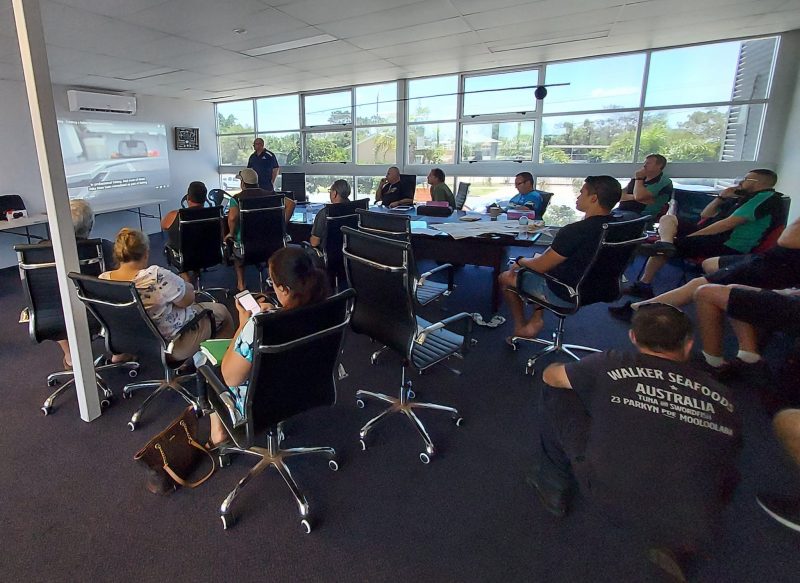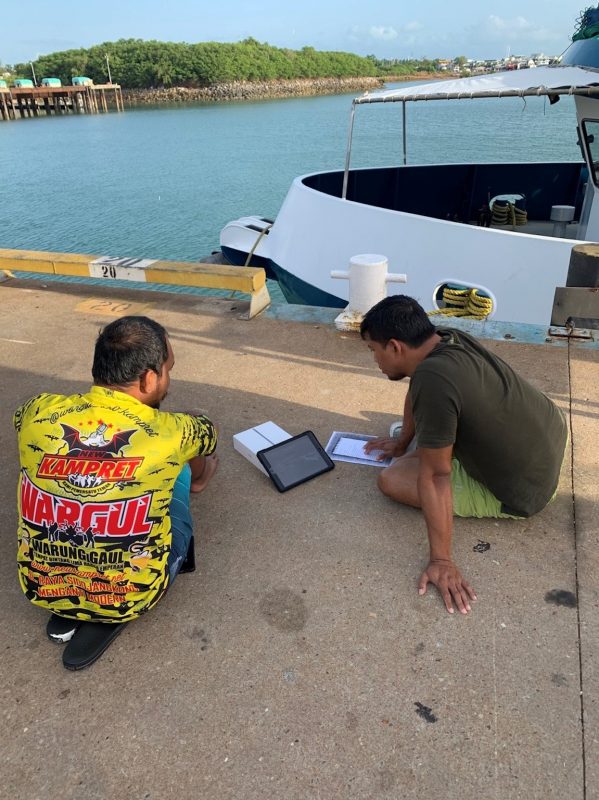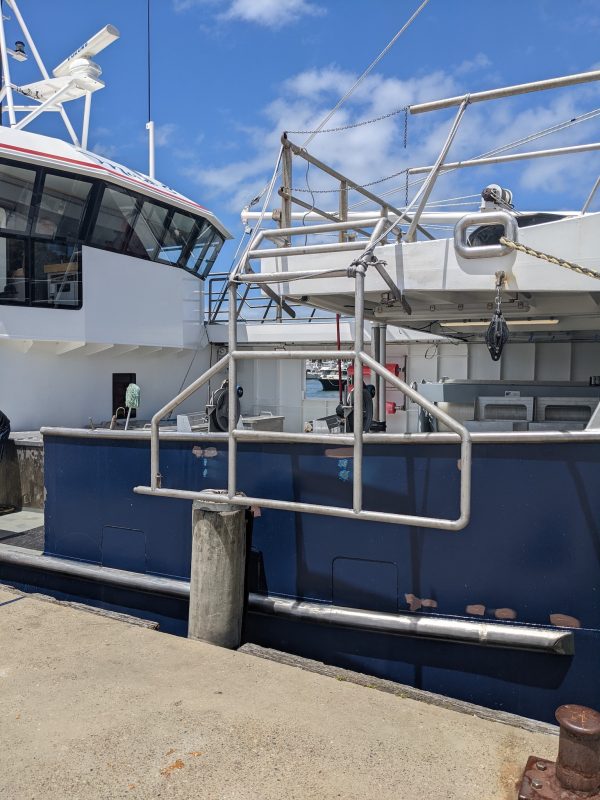New technologies and tools to improve crew safety at sea
Tuna Australia is rolling out digital technologies and trialling innovative safety tools to enhance crew safety on vessels.
Skippers and deckhands face many risks and hazards when working at sea—a job deemed one of the most dangerous in Australia.
“Tuna Australia is taking proactive steps to ensure boat owners, fishing masters and deckhands understand their safety responsibilities and have the latest tools to maintain a safe workplace,” said Phil Ravanello, Program Manager, Tuna Australia.
We want to ensure every crew member comes home safe and uninjured after every trip to sea.
Safety management systems
In Australia, all commercial vessels are required by law to carry a safety management system (SMS).
The SMS is a suite of operating procedures, protocols and policies that identify onboard hazards and risks, assesses the likelihood and consequence of each risk, and identifies steps to protect against those risks. The SMS, which must be accessible to crew, also documents crew training, safety drills and maintenance schedules.
“Currently, all tuna operators are using paper-based systems that are not interactive, easy to maintain or readily available when Australian Maritime Safety Authority (AMSA) officers undertake audits,” said Ravanello.
To help tuna operators modernise their systems, Tuna Australia is providing all interested members with a one-year subscription to the Offshore SMS app and a tablet to use the app.
“The digital app provides a fully compliant and up-to-date SMS plus real-time digital logs for vessels, all with zero paper,” said Steve Fraser, owner of Offshore SMS, an Australian business run by a couple of professional fishermen.
“Each vessel’s SMS is stored safely in the cloud, meaning it is always backed up and accessible from any device, anywhere. The SMS can also be used offline and synced when back in port, saving money on at-sea internet charges.”

Safety management system training in Mooloolaba on 1 February 2022.
Since December 2021, Fraser has been working directly with tuna operators to understand and transform their SMS. The rollout will be complete by March 2022.
“All the operators I’ve spoken to have jumped on board with the idea of the app. There is plenty of interest in it,” said Fraser.
To support the rollout, Tuna Australia and AMSA held an SMS information workshop for members in Mooloolaba (QLD) on 1 February 2022, and another will be held in Ulladulla (NSW) in March 2022.
“The workshops highlight how fishing masters and crew can engage with their SMS to enhance the safety of a vessel’s operations, review procedures following any incident, and build a strong safety culture,” said Ravanello.
Training promotes ‘quick and simple changes’
Under workplace health and safety law, a commercial vessel is considered a workplace, and boat owners and fishing masters must take “all steps deemed reasonably practicable” to miminise risks to crew health and safety.
To provide their members with essential safety training resources, Tuna Australia has been collaborating with the SeSAFE project.

Crew from Australia Based Seafoods completing SeSAFE modules using a tablet. Photo by M. O'Brien.
The SeSAFE project—funded by the Fisheries Research and Development Corporation (FRDC), the Australian fishing and aquaculture industry, and AMSA—offers online training modules covering risk assessments, emergency procedures, personal safety, and boat operations. Fishery-specific modules can also be developed.
“Many of the risks facing crew members can be eliminated or reduced by quick and simple changes in behaviour and practice learned from safety training,” said Steve Eayrs, Principal Investigator of the SeSAFE project.
“There is no such thing as too much safety training.”
Currently, SeSAFE is optimising its content, normally viewed on a computer, to display on a tablet platform to make it easier to access. Once complete, Tuna Australia will upload the SeSAFE training modules to the tablets distributed to vessels engaged in the SMS rollout.
“Crew members can easily access training modules at any time, and at any place, including at sea without internet access,” said Eayrs.
“This training is designed to complement onboard inductions and drills, not replace them.”
The Fisheries Research and Development Corporation congratulates Tuna Australia on this proactive step to improve crew safety at sea.
"Making the SMS available digitally will help tuna operators modernise their systems and help everyone come home safely," said Dr Chris Izzo, Senior Research Manager at FRDC.
Safer fishing practices
Since November 2020, Tuna Australia has been trialling new and improved wildlife mitigation technologies that enhance crew safety as part of a project funded by FRDC.

A safety bar being trialled on the Mira S. Photo by Phil Ravanello.
Currently, flyback safety bars and screens—to prevent recoil and possible serious injury if a fishing line breaks when hauling fish—have been fabricated and are being trialled on six boats.
Safety lead replacements for weighted swivels—that make bait sink faster and away from scavenging birds—are being trialled on six boats, with good anecdotal feedback so far.
Adam Whan, owner of 4Seas, based in Mooloolaba, has several of his boats involved in the safety lead trials.
“We’ve had ZERO flybacks since moving to this new system,” said Whan.
“The sliding safety leads are 30% shorter than the current industry standard and supplied in a non-luminescent colour. We haven’t seen any change in our catch rates since swapping out our weighted swivels.
“At the same time, we are seeing improvements to our fishing operations such as reduced hook bin tangles and less time to make up new gear,” he said.
In addition, tori lines—which act like scarecrows to frighten scavenging seabirds—have been redesigned to be more effective and easier to handle.
Currently, there are 10 new tori lines being trialled across five boats in the fishery, with fishing masters reporting significant improvements in in preventing birds from scavenging bait.
“Mitigation devices and safety measures that are demonstrated to be effective will be extended across the entire fishery, ensuring safety is at the forefront of daily fishing operations,” said Ravanello.
The data and information collected from the trials, will be used to inform a final report to the FRDC at the end of 2022.